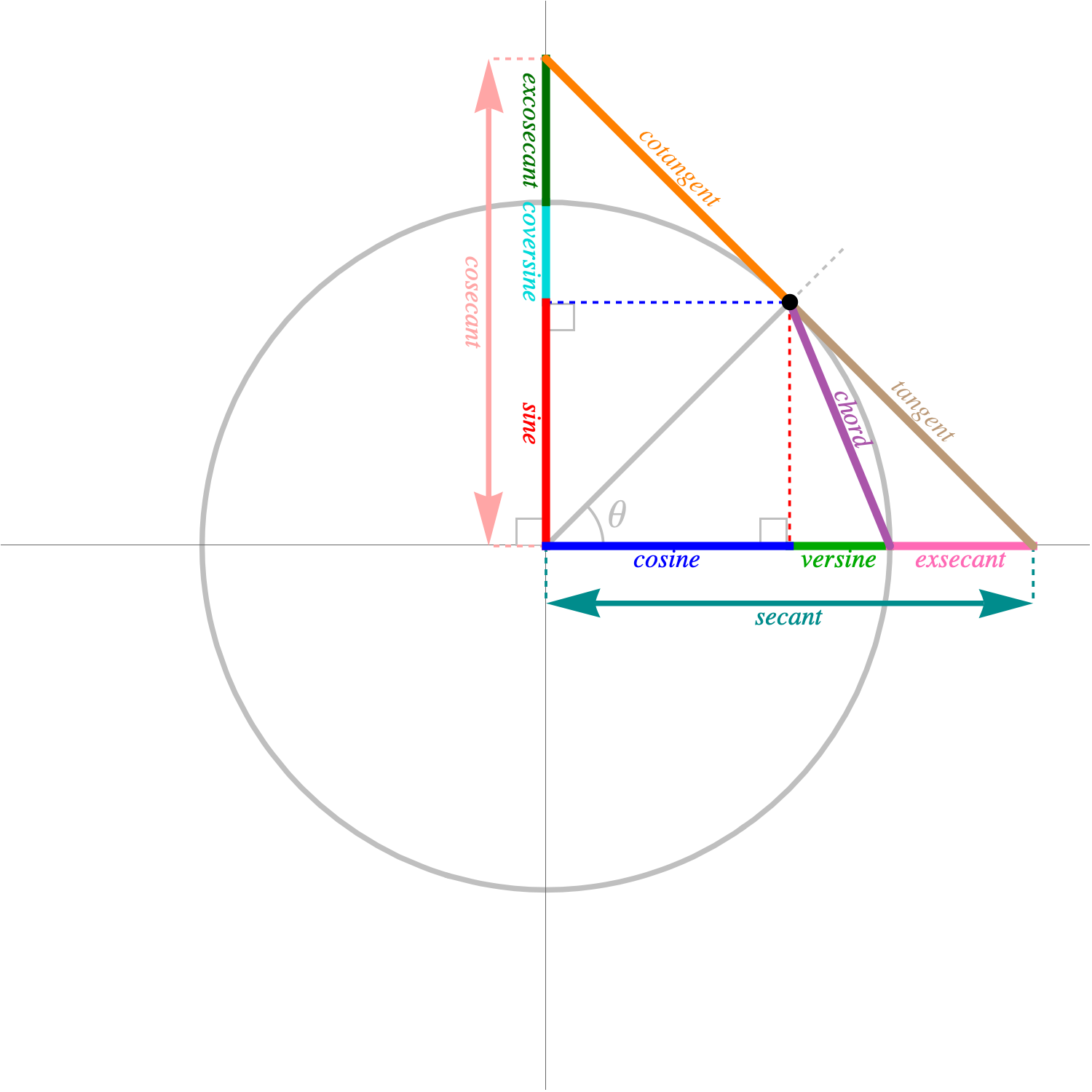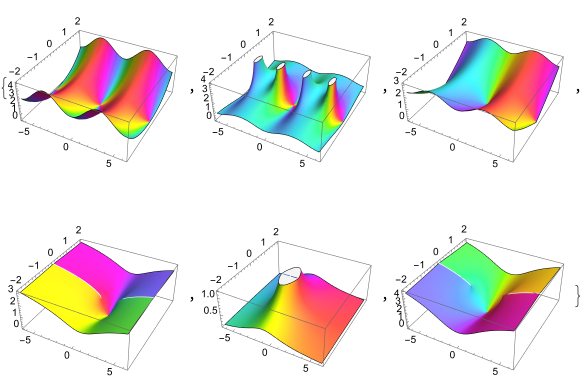TheRealCStover/Trigonometry
A collection of lesser-known circular and hyperbolic trig functions and their inverses
Contributed By: Christopher Stover
In a standard trigonometry course, we typically learn about six functions (and their inverses): sin(x), cos(x), tan(x), csc(x), sec(x), and tan(x); this may or may not be extended later to cover the six hyperbolic trig functions (e.g. sinh(x)) and/or their inverses (e.g. sin-1(x), sinh-1(x)).
A less-known fact is that trigonometry actually consists of over two dozen other circular and hyperbolic functions, each of which has a well-defined inverse. These mysterious trig functions are closely related to the more well-known relatives that we all know and love today, and though they're rarely used, these functions were ubiquitous a few centuries back, being employed both in academia and in various applications (e.g. mapmaking, ocean exploration, etc.).
Mathematica has a couple of these little-used trig functions built in (namely Haversine and InverseHaversine), but the rest remain unrepresented; this absence is the underlying motivation for the Trigonometry paclet. All of the 50+ functions in this paclet work naturally with the entire Wolfram Language framework, and their immediate availability allows for a better understanding of the relationships and history of both trigonometry and mathematics as a whole. These functions provide both a learning opportunity and a teaching tool, thus contributing to the enrichment of mathematics.

Installation Instructions
To install this paclet in your Wolfram Language environment,
evaluate this code:
PacletInstall[ResourceObject["https://wolfr.am/15nshOULd"]]
